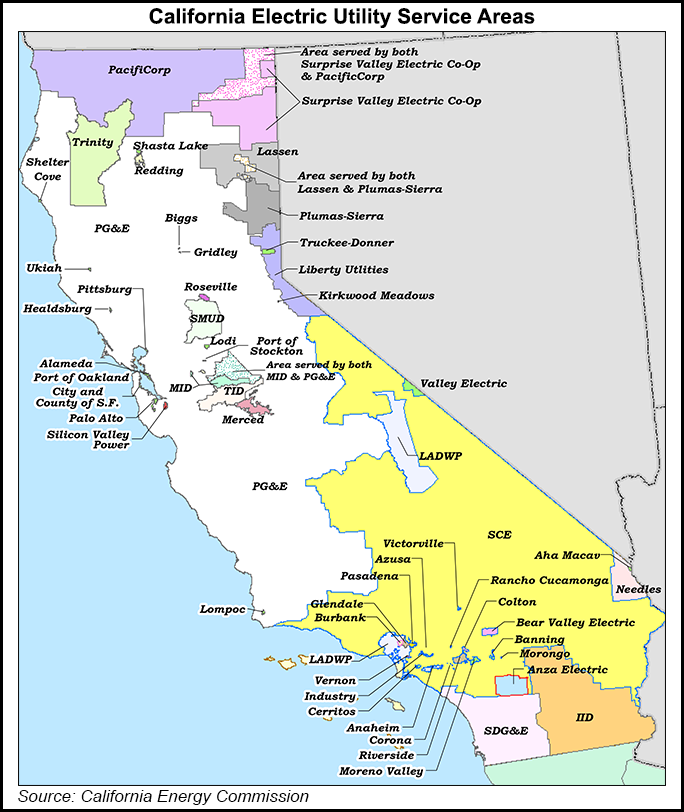NGI All News Access | Infrastructure
California OKs Microgrid Program for Planned Wildfire-Related Power Outages
California regulators last Thursday approved a multi-billion-dollar microgrid program accelerating short-term actions to lessen the impact of planned wildfire preventive grid shutdowns by the state’s major investor-owned utilities (IOUs).

The unanimous approval of the five-member California Public Utilities Commission (CPUC) turns the power utilities loose to facilitate projects that could deliver energy services during wildfires and public safety power shutoffs (PSPS).
“This rulemaking was fast-tracked after the mismanagement by utilities of the October 2019 PSPS events in the state and is intended to increase the deployment of new projects during this wildfire season,” said spokesperson Julie Hall. The decision “provides communities with a strong interest in microgrids and resiliency projects better access to the technical resources and support from utilities.”
The CPUC directed the largest utilities to allow various grid-connected resiliency projects, modify net energy metering tariffs to allow storage devices to charge from the grid in advance of planned PSPSs, and work closely with local and Native American tribal governments to have microgrid services in place.
The CPUC also approved conditioned wildfire mitigation plans for the IOUs, all of which were found to have various deficiencies by the commission’s Wildfire Safety Division. Individual four-year budget estimates for the plans are to be reviewed as part of the general rate case process: PG&E Corp. ($9.54 billion); Southern California Edison Co. ($4.5 billion), and San Diego Gas and Electric Co. ($1.3 billion).
Lead commissioner on the proceeding, Genevieve Shiroma, said it was the first of at least two more phases, with subsequent ones “exploring the viability of nondiesel alternatives for next year’s wildfire season.”
Commissioner Martha Guzman Aceves said she wants the utilities to emphasize non-diesel technologies in the microgrid program, although she knows “people want whatever will keep the lights on” during PSPS events.
PG&E spokesperson Paul Doherty characterized the CPUC approvals as demonstrating that utilities were “making progress in reducing wildfire risk for communities, in addition to meeting minimum statutory requirements for wildfire mitigation plans, and we have already made significant progress.” PG&E Utility CEO Andy Vesey added the company was “working to reduce the scope, duration, and impact of future PSPS events, and a key piece of this strategy is developing and deploying microgrids.”
Under California’s aggressive climate change policies, a solar-storage microgrid is the preferred option, but PG&E has argued that there is not enough solar technology to avoid using other alternatives, which often means diesel-fueled backup power. To avoid the more polluting alternative, natural gas microgrids could emerge.
A recent study by the Brattle Group concluded that natural gas microgrids “provide the most economic value for the required level of resilience.” With a low upfront cost, the gas systems can “nearly break even” on the basis of earned market revenues, according to the report.
PG&E earlier this month said it might need to use both gas and diesel back-up generators to help power local areas during PSPS events. State regulators have urged utilities not to use fossil fuels for microgrids in future fire seasons.
As a backdrop to the regulatory panel’s work last week, California experienced its first statewide heat spell, and a few small wildfires erupted in Southern California, including a 13-acre blaze on the Camp Pendleton Marine Base in north San Diego County. All were quickly contained.
© 2024 Natural Gas Intelligence. All rights reserved.
ISSN © 1532-1231 | ISSN © 2577-9877 |
